INSTRUCTIONS TO CANDIDATES
- Write your name, index number, date and sign in the spaces provided above.
- This paper consists of three sections A, B and C.
- Answer all the questions in sections A and B and one question in section C.
- Answers should be written in the spaces provided.
For Examiner’s Use Only
|
Section |
Question |
Candidates Score |
|
A |
1 |
|
|
B |
2 |
|
|
3 |
||
|
4 |
||
|
5 |
||
|
6 |
||
|
C |
||
|
Total Score |
||
QUESTIONS
SECTION A (20 MARKS)
Answer ALL questions in this section in the spaces provided.
-
- Describe Atmospheric perspective. (1 mark)
- Explain how Poetry is related to Art and Design. (1 mark)
- Describe “Landscaping” as a career related to Art and Design. (1 mark)
- Give two sets of triadic colours combinations on the colour wheel with focus on tertiary colours. (2 marks)
- Study the picture below and use it to answer the questions below.
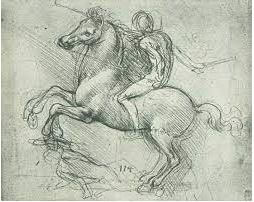
Explain how line has been used in the picture above. (1 mark) - Study the illustration below;
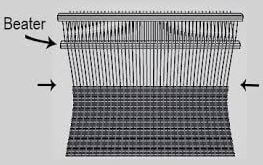
Identify the weaving defect above and explain how you would correct it in weaving process. (2 marks) - Explain the main importance of contrast in a composition. (1 mark)
- Explain the term “cap height” as used in graphic design. (1 mark)
- Describe an “easel” and explain its use in Art and Design activities. (2 marks)
- Describe the gravure printing technique. (1 mark)
- Study the sculpture shown below;
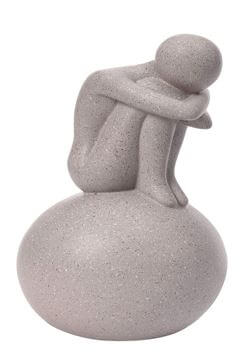
- Identify the type of sculpture shown above. (1 mark)
- Describe the nature of the planes used in the sculpture above. (2 marks)
- Explain the cause of shimmering effect in a mosaic art work. (1 mark)
- Distinguish between the terms “montage” and “photomontage”. (2 marks)
- Explain the term “refractoriness” as used in pottery. (1 mark)
SECTION B (25 MARKS)
Answer ALL questions in this section in the spaces provided.
-
- What is foreshortening as used in drawing? (1 mark)
- In the space provided, draw the clenched fist below, viewed from the direction of the arrow. (4 marks)
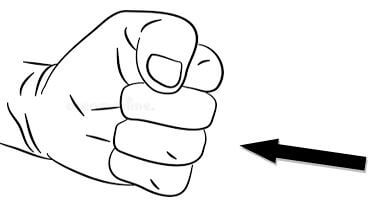
- Outline the procedure of window mounting. (5 marks)
- Study the pottery form below.
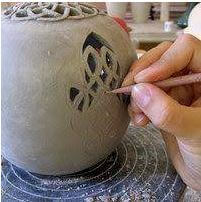
- Identify the pottery decorative technique used. (1 mark)
- Describe the technique in 4 (a) above. (4 marks)
- Highlight the steps of making paper collage. (5 marks)
- Study the weaving technique shown below.
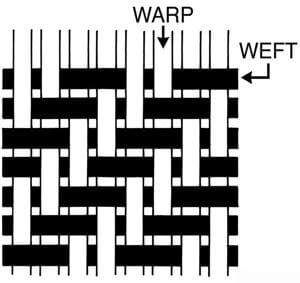
- Identify the weave structure above. (1 mark)
- Give the structure reading of the above weave structure from left. (3 marks)
1st row
2nd row
3rd row - In relation to weaving, explain the meaning of the word shed? (1 mark)
SECTION C (15 MARKS)
Answer ANY ONE question from this section in space provided after question 9.
- Study the composition below.
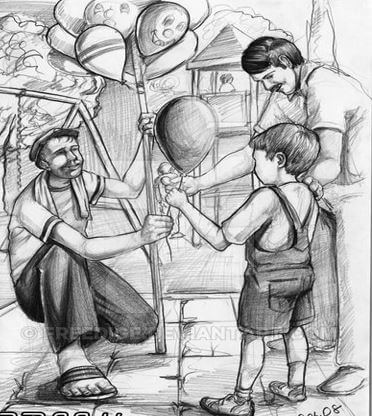
Analyse the use of the following principles in the composition above.- Proportion (3 marks)
- Dominance (2 marks)
- Balance (3 marks)
- Rhythm (3 marks)
- Contrast (3 marks)
- Identify and describe three types of traffic control signs giving one example for each, its shape and colour. (15 marks)
-
- Explain the use of the following tools in mosaic work. (5 marks)
- Describe two methods of mounting tesserae on the support in process of making mosaic art work. (4 marks)
- Outline the procedure of making a glass mosaic. (6 marks)
MARKING SCHEME
-
- Describe Atmospheric perspective. (1 mark)
- This is the effect the atmosphere has on the appearance of objects when you look at them from a distance. Objects further back into the distance are seen less clearly and their colour changes in value, saturation and hue.
- Explain how poetry is related to Art and Design. (1 mark)
- they are both used for expression purposes where creativity is key. art uses images while poetry uses words.
- Describe “Landscaping” as a career related to Art and Design. (1 mark)
- Addition of plants, manipulation of terrain and construction of structures planning them in a given space to make it appealing.
- Give two tertiary triad colour combinations on the colour wheel. (2 marks)
- RED ORANGE, YELLOW GREEN, BLUE PURPLE
- BLUE GREEN, YELLOW ORANGE, RED PURPLE
- Study the picture below and use it to answer the questions below.

Explain the use of lines in the picture above. (1 mark)- Enclose shape - The shapes of the horse and human figure below have been enclosed by lines.
- Define form - lines have been used to create texture and shade on the surfaces of human form used and the horse.
- Suggest movement - lines have been used to take the direction of movement of the horse.
- Study the illustration below;

Identify the weaving defect above and explain how you would correct it in weaving process. (2 marks)- Waisting
- By stretching the warps on the loom tightly.
- Avoid pulling the wefts too tightly
- Securing the selvedges on the loom.
- Explain the main importance of contrast in a composition. (1 mark)
- To enable the main forms to stand out/dominate the scene to bring out dominance in a composition.
- Explain “cap height” as used in graphic design. (1 mark)
- the guideline in graphic design which indicates where the capital letters will reach.
- Describe an “easel” and explain its use in Art and Design activities. (2 marks)
- A wooden frame for holding an artist’s work while it is being painted or drawn.
- The picture plane is mounted on it to be able to stand upright to be worked on easily.
- Describe the gravure printing technique. (1 mark)
- a printing technique where the image is broken down to thousands of dots and etched on a plate which is embedded onto a roller forming the printing plate.
- Study the sculpture shown below;

- Identify the type of sculpture shown above. (1 mark)
- Sculpture in the round.
- Describe the nature of the planes used in the sculpture above. (2 marks)
- The planes of the human form are majorly curved, apart from the back which looks flat. The spherical form has one continuous convex plane.
- Identify the type of sculpture shown above. (1 mark)
- Explain the cause of shimmering effect in a mosaic art work. (1 mark)
- Reflection of light on the tessarae that are cube like and are arranged forming a network of interstices.
- Distinguish between the terms “montage and photomontage”. (2 marks)
- Explain the term “refractoriness” as used in pottery. (1 mark)
- Capacity of clay to withstand high temperatures without deforming/high degree of resistance to heat.
- Describe Atmospheric perspective. (1 mark)
-
- What is foreshortening as used in drawing? (1 mark)
- It is the apparent reduction of length of a form due to projection either towards or away from the viewer.
- In the space provided, draw the clenched fist below, viewed from the direction of the arrow. (4 marks)

- What is foreshortening as used in drawing? (1 mark)
- Outline the procedure of window mounting. (5 marks)
- Trim the mounting board to the size you want for mounting.
- Trim the picture you want to mount.
- Draw a window on the board slightly smaller in dimensions than the picture.
- Cut the small frame on the board.
- Mount the picture on the reverse so that it is seen through the window.
- Study the pottery form below.

- Identify the pottery decorative technique used. (1 mark)
- Excising
- Describe the technique in 4 (a) above. (4 marks)
- Draw your design on paper.
- Transfer your design on the leather hard pot
- Cut the design sinking them through the walls of the pot
- Cut out the shapes of the design from the pot leaving open space designs.
- Identify the pottery decorative technique used. (1 mark)
- Highlight the steps of making textile collage. (5 marks)
- Prepare a suitable support to hold the collage.
- Draw a composition and work out the areas to have the textile materials – choose different types of textiles and cut, tear, roll, fold or twist and paste them to the support according to the composition – if required, paint or draw on areas of the collage – Frame the collage and hang it.
- Study the weaving technique shown below.

- Identify the weave structure above. (1 mark)
- 2/2 Twill weave structure.
- Give the structure reading of the above weave structure from left. (3 marks)
- 1st row
- Over two, under two, over two, under two.
- 2nd row
- Under one, over two, under two, over two, under one.
- 3rd row
- Under two, over two, under two, over two.
- 1st row
- What is a shed as used in weaving? (1 mark)
- The space created by picking alternate warps through which wefts are passed for interlacing.
- Identify the weave structure above. (1 mark)
- Study the composition below.

Analyse the use of the following principles in the composition above.- Proportion (3 marks)
- The grown up human forms look bigger than the child, they are the right sizes in relation to each other.
- Parts of humans beings are depicted with right sizes, they relate well with the human forms.
- Human forms appear too big and going out of the space used. Too big for the available space.
- Dominance (2 marks)
- Human forms are dominating the scene.
- They have both grouped together and therefore stand out as a unit.
- They have been shaded dark to make them stand out from the background.
- Balance (3 marks)
- The balance used is asymmetrical balance.
- One man with balances is balanced with another man with a child on the other side if the axis.
- In the background there is a guard’s shed balanced with clouds as the other side of the axis.
- Rhythm (3 marks)
- Repeated forms of balloons on the holder creates a flowing repeated movement.
- Progression has been used to create rhythm-forms in the background are getting smaller.
- The paved ground is also getting smaller from the foreground.
- Contrast (3 marks)
- Use of dark shaded human forms against a faint background.
- Use of bold and light lines.
- Use of rough and smooth textures.
- Proportion (3 marks)
- Identify and describe three types of traffic control signs giving one example for each, its shape and colour. (15 marks)
-
- Explain the use of the following tools in mosaic work. (5 marks)
- Nippers
- Trowel
- Sealer can
- Tweezers
- Spatula
- Describe two methods of mounting tesserae on the support in process of making mosaic art work. (4 marks)
- Outline the procedure of making a glass mosaic. (6 marks)
- Explain the use of the following tools in mosaic work. (5 marks)
Download Art and Design Paper 1 Questions and Answers - Mincks Group of Schools Mock Examinations 2022.
Tap Here to Download for 50/-
Get on WhatsApp for 50/-
Why download?
- ✔ To read offline at any time.
- ✔ To Print at your convenience
- ✔ Share Easily with Friends / Students
